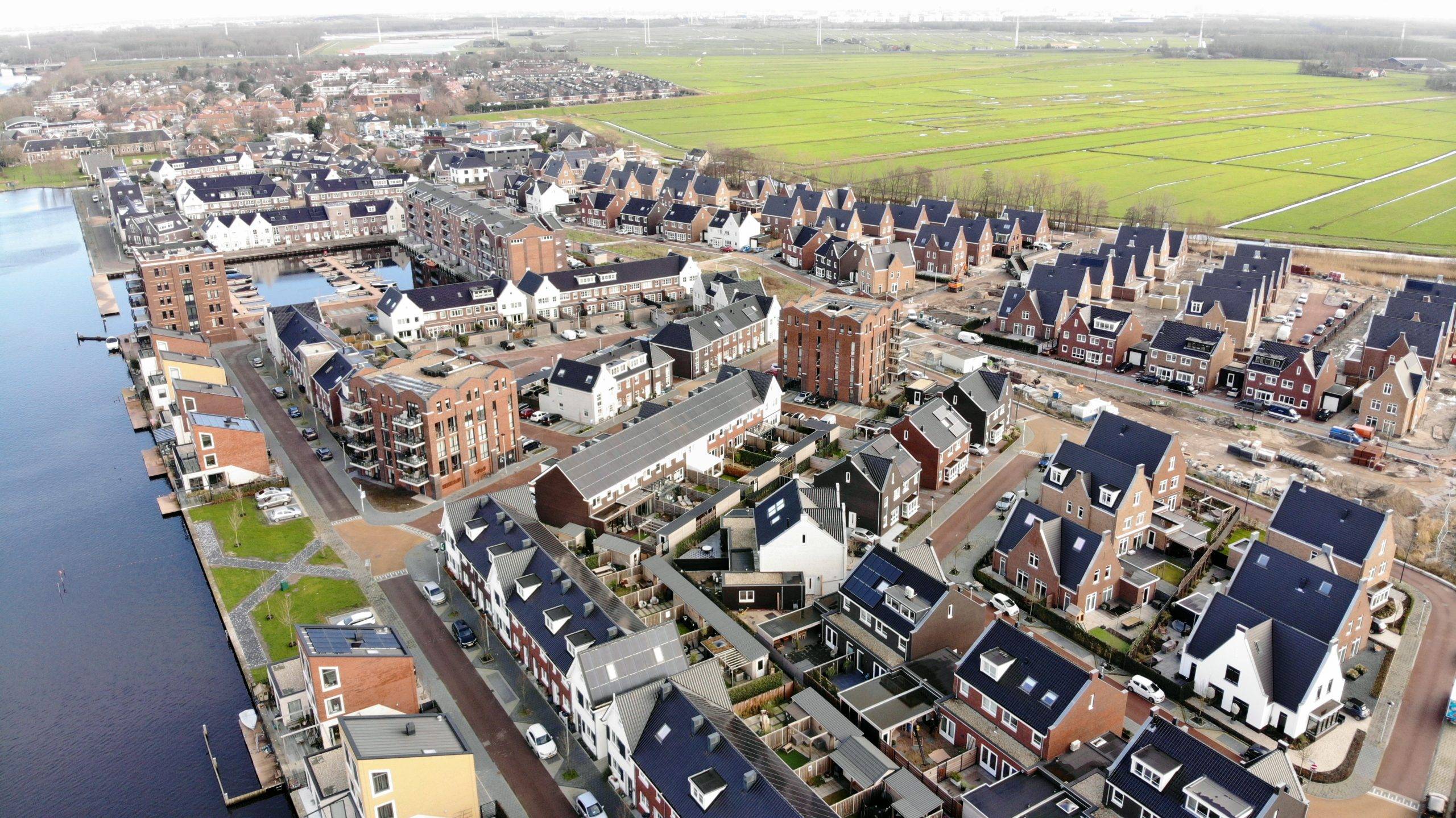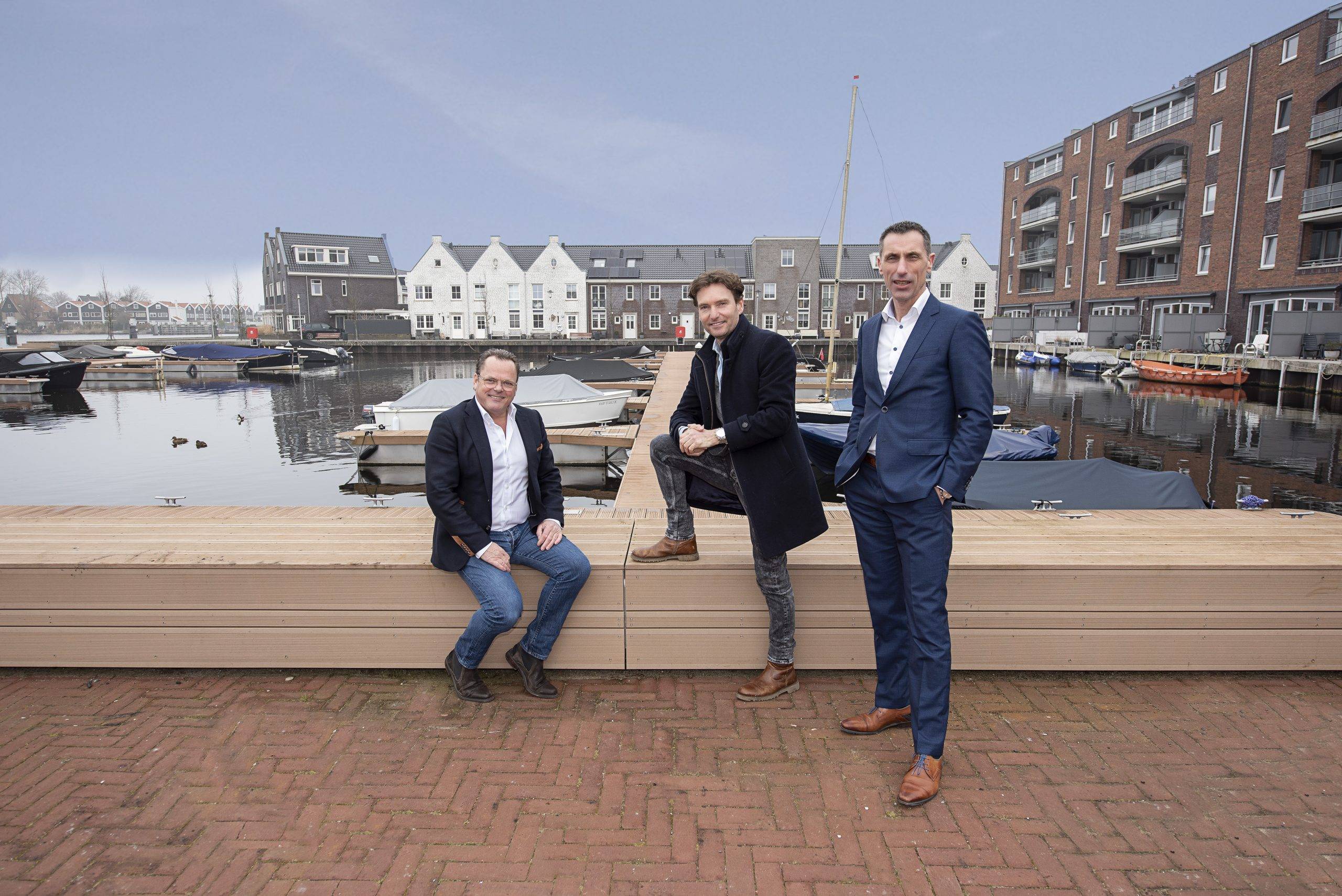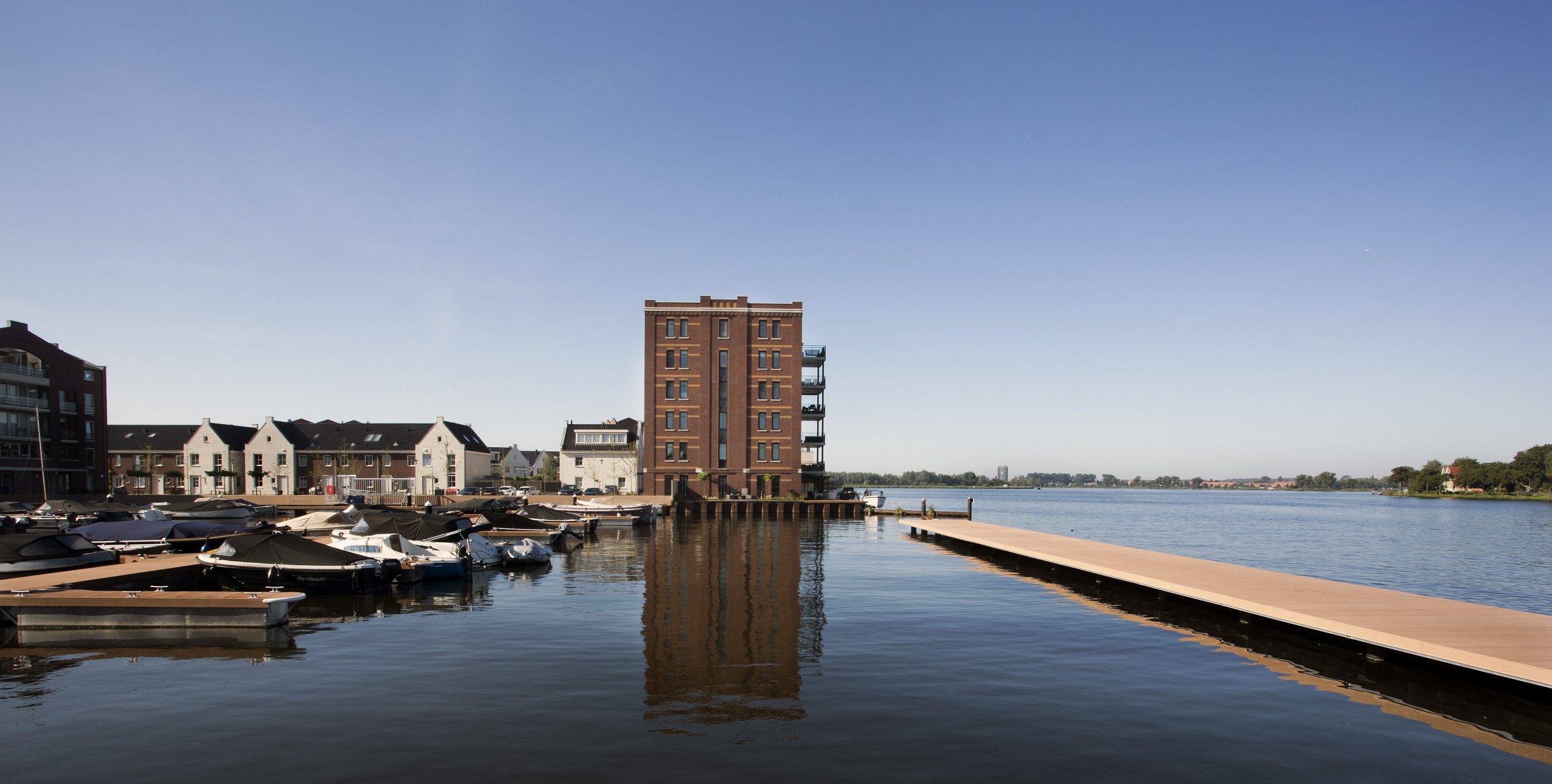Some things take time, but then it is usually worth it. In 2006, the plans were signed to develop the run-down Spaarndam shipyard into a residential area. Fifteen years later, at the start of 2021, all 311 homes in the new SpaarneBuiten residential neighbourhood have been sold.
The project needed visionaries to be successful – in other words, people who could look beyond the ugly warehouses and get a feeling for the history of this old shipyard. Developers who were not put off by the contaminated land which the shipyard had left behind, but who saw its potential for becoming a beautiful place.
The two project developers involved, KondorWessels Vastgoed and VolkerWessels Vastgoed, and the contractor Kondor Wessels Amsterdam, had a shared vision. The municipality of Haarlemmermeer also played a key role. Indeed, they shared the desire to return this lost area to society.
A neighbourhood for the future
”THIS IS ABOUT CREATING A NEW AND SUSTAINABLE FUTURE
‘That is what made us enthusiastic’, explains Willem Gaymans, director of KondorWessels Vastgoed. ‘Area development is about creating a new and sustainable future and, in that respect, we certainly don’t shy away from complex challenges. The aim is not just to build, but above all to find the right balance between living, working, entrepreneurship and relaxation to create an enjoyable neighbourhood of and for people.’
Frank Aalders, director of Kondor Wessels Amsterdam adds, ‘You can’t do a project like this on your own. You have to join forces with parties that share your vision. We all saw how this area could provide an economic impulse for the surroundings. What is more, we have tried to build as sustainably as possible. That is also part and parcel of creating a future for the people who come to live here.’
Differentiation in properties
In total, SpaarneBuiten consists of a nice variety of 311 homes in various price classes, from apartments to detached urban villa. The variation in size and architecture creates a diverse image and makes the neighbourhood suitable for people at different stages of their lives.
The former shipyard has been converted into a marina as a lasting reminder of this location’s rich history.

Sustainable concepts
Forty semi-detached homes and 109 terraced properties have been constructed using the sustainable PlusWonen prefab concept. This concept meets the ever more stringent requirements applicable to healthy residential climates and also provides an opportunity for elderly people to continue living at home for longer.
Twenty-three owner-occupied homes with a maximum price based on the purchasing costs being paid by the vendor, as set by the municipality, were constructed on the basis of the MorgenWonen concept. They too are comfortable, healthy and affordable prefab homes. They are of an extremely high quality, low maintenance, and have been assigned the Zero Energy quality mark.
The level of sustainability of the passive houses is even higher. Thanks to its ingenious design, a passive house only needs a tiny amount of energy to heat it. The energy consumption in a passive house is approximately four times lower than in an average property. Among other things, the properties have thermal insulation, triple glazing in modified window frames and balanced ventilation with heat recovery. They retain their heat during the winter and in the summer they stay cool.
Patience
Kondor Wessels Amsterdam is an expert in urban construction. The company is used to adapting to the challenges of each new day, without losing sight of the big picture. ‘The big picture and lots of patience’, Frank Aalders explains with a laugh. “Of course we reckoned we would experience setbacks or delays, but we didn’t expect it to last fifteen years.’
One of the first major hurdles to get over was the severely contaminated soil. ‘The asbestos took one and a half years to clear. But the wonderful healthy and green neighbourhood that has now been created makes it all worthwhile! It is an absolute pleasure to spend time here.’

From left to right: Otto van der Pluijm, Willem Gaymans and Frank Aalders. Photo: EAS Fotografie
Positive
The ambitious project was carried out in phases over a period of ten years. On top of that, the construction work was halted for five years due to legal proceedings. With such a large-scale project as this, people are often concerned about the impact on nature and the environment and this project was no different. As Willem Gaymans explains, ‘You have to appreciate that concern comes from involvement. We were extremely careful in how we responded to the interests of nature, residents and the environment. That is why we are also so pleased that we have been able to bring this wonderful project to such a positive conclusion.’
The adventure undertaken by the three VolkerWessels ‘musketeers’ started in 2006 in an ugly and heavily contaminated shipyard. Fifteen years later, SpaarneBuiten is a clean, green urban district offering panoramic views where, in the evening, you can enjoy sunsets over the water. As we have already explained, some things take time, but then it is usually worth it.
